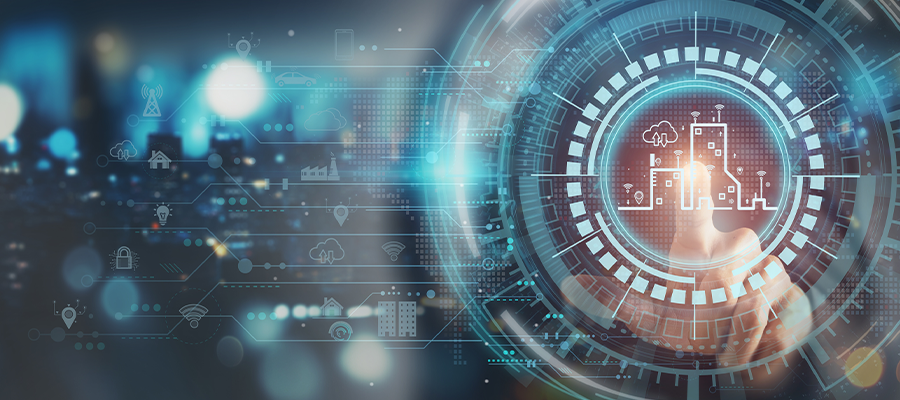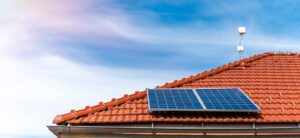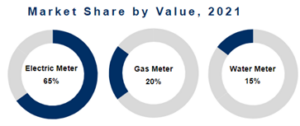The New Generation of Advanced Metering Infrastructure

The New Generation of Advanced Metering Infrastructure
By Kenny Murphy, President, Bermex
The first smart meters, a component of Advanced Metering Infrastructure (AMI), were installed in 2006 when Pacific Gas & Electric rolled out 9 million meters. As of 2022 smart meters accounted for 72% of all electric installations and 88% of total installations were residential. Smart meter installations have doubled since 2010 and reached 124.0 million in 2022. Efforts to educate consumers on the benefits and security of smart meters are helping to increase acceptance and adoption.
Nearly 20 years later, meters are being replaced by a new generation of meters with advanced technology. According to the Edison Foundation, 135 million electric smart meters are estimated to be installed in the U.S. by year-end 2025. The growth in adoption of smart meters nationwide is attributed to the cost and energy savings the new technology provides. Growth is also propelled by improving residential construction activity and a greater number of utilities converting to smart grids.
The first generation of digital meters provided significant benefits over analog meters. They recorded electric use and communicated on a daily schedule back to the utility company for monitoring and billing. Other advantages included automating readings, reducing human errors, and providing enhanced data for better energy management. They also saved utilities the cost of meter readers and field crews to disconnect and reconnect a meter, which reduced transportation costs and carbon emissions.
AMI 2.0
According to a report by Deloitte, new meters have faster processors, increased memory, can support various communication technologies, and have longer-lasting batteries. “This sort of intelligence is increasingly becoming necessary to manage the expansion of complex energy–producing and energy–consuming devices in households worldwide. Local power generation from solar panels, home battery systems, and eventually electric vehicles being able to transmit electricity back to the grid is becoming more common.”

Electric companies are increasing the use of smart meter data to influence consumer energy use to meet clean energy goals, add customer services, and enhance grid resiliency during severe weather events.
The Edison Foundation in their Smart Meter Deployment report, identified several services provided by utilities. One example highlighted was Florida Power & Light’s (FPL’s) smart meter-enabled energy dashboard designed to help residential customers understand how and why their electricity usage changes over time and provides personalized solutions to help customers control their energy consumption. The dashboard, accessible via FPL’s website or app, utilizes interval data from the customer’s smart meter to compare usage over time, project next month’s bill, and FPL’s Home Energy Survey identifies energy consumption by major household appliances. By using load curve analytics, the survey can pinpoint opportunities for energy efficiency improvements. In addition, FPL’s Care Center Representatives are using the dashboard with customers who call in with bill concerns.
The report highlights services using smart meter data that impact the customer experience and energy use including:
- Online access to energy use through company websites and apps
- Fewer estimated bills
- Remote connect services for customers who are moving
- Resolving billing questions
- Rate plan comparisons to be sure a customer is on the most economical plan
Gas and Water Smart Meters
Although the U.S. Smart Meters market is led by electric meters mostly due to the compatibility of existing smart meters, government initiatives, economic incentives, and technology advancements, the growth market for gas and water is increasing.

Gas meters have longer operational lifespans, which has slowed replacement rates along with cost technology challenges. The primary drivers for adoption are enhanced safety through leak detection and better monitoring of consumption. The growth of smart meters for water is increasing because of the demand for water usage, optimization of the billing process, and the benefits of water conservation and leak detection. Challenges in Advanced Metering Infrastructure can include connectivity, especially in remote places but increasing government initiatives for water infrastructure improvements, which include smart water meter installations are playing a significant role in the adoption of smart water meters.
In Conclusion
The capabilities of smart meter technology and the data collected through them will continue to expand to help consumers control their energy use and to be an important component in the modernization and resiliency of the power grid. The Advanced Metering Infrastructure industry has heavy regulation by the government, primarily for electricity. Industry associations will continue to fuel innovation and fund the research and development of new technologies to advance the industry.
Sources: IBIS, Statista, PR Newswire, Allied Market Research, EIA, Edison Foundation, Deloitte, and Global News Wire
Related Articles

By Tommy Combs, President, Bermex In the latest edition of the DIRT Report, the Common Ground Alliance (CGA) reveals that despite decades of progress in underground infrastructure damage prevention, the industry remains at a critical turning point. The 2024 data show a concerning plateau, and in some cases a reversal, in the trend of reducing[...]
Read More
By Mark Green, Business Development Manager, Bermex Environmental responsibility and resource conservation are more than good PR; they have become critical, bottom-line imperatives. Utility companies find themselves at the forefront of a sustainability battle that extends far beyond their traditional operational boundaries. At the heart of this challenge lies a deceptively simple yet profound issue:[...]
Read More
By Thomas Gooch, Director of Operations, Bermex Every few minutes across the United States, someone digging into the ground accidentally strikes an underground utility line. The consequences of these incidents extend far beyond the immediate damage to pipes, cables, or equipment. Utility strikes represent an extremely expensive and dangerous infrastructure challenge. The Financial Impact According[...]
Read More
By David Mack, Senior Business Development Manager, Bermex When it comes to preventing utility damages, most organizations focus on technology, training, and regulations. But at the 2025 CGA Conference & Expo, a powerful theme emerged from multiple speakers, including Dr. Victoria Grady of George Mason University: culture, not compliance, is the foundation of lasting safety[...]
Read MoreCategories
Recent Posts
- Diffusing a Difficult Customer [Infographic] 10th Sep 2018
- Neighborhood Safety [Infographic] 24th Sep 2018
- Bermex Has Named Keith Pancake as New Safety Manager 02th Dec 2019